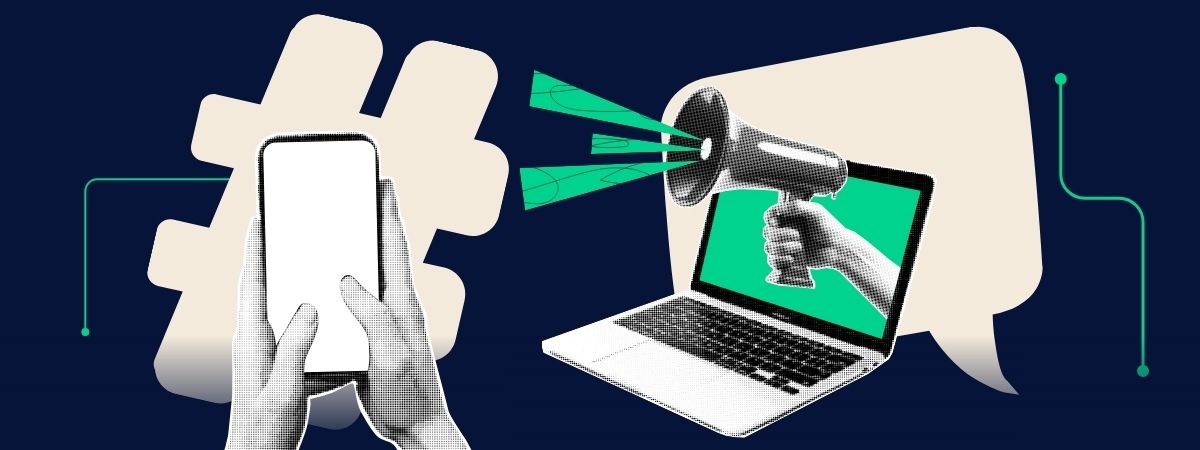.png)
Product Led Growth: What’s the big deal?
I have been falling in love with the practice of Product Led Growth.
It’s an alternative set of practices that rivals the more traditional growth models, such as Marketing Led Growth and Sales Led Growth. And it’s taking the marketing, product and data sectors by storm.
Seeing Michael Jon Wissekerke and the TymeBank advertising for roles in the space reiterated to me how relevant and important it is to breaking through the clutter and doing things better than before.
Product Led Growth is something that we - at YOUKNOW - have been looking into ever since our natural progression of technology exploration led us to user analytics that shed light on the data customers share with us through their actions.
Ideally, if you’re tracking and analysing everything that a customer does when they’re interacting with you, then theoretically you can influence those customers much faster than building a marketing campaign, or by getting a sales team to interact with them over a long period of time.
So, as the first in a series of pieces on the topic, let’s unpack what Product Led Growth looks like compared to Marketing Led and Sales Led Growth.
Marketing Led Growth
Having started my career in the corporate space, I learned quite a bit about the need for - and pitfalls of - Marketing Led Growth. MLG operates on the principle that brand visibility and lead generation are the most important levers for growth. By leveraging digital marketing strategies - SEO, PPC, social media, content marketing, and more - MLG aims to attract a wide audience, convert them into leads, and ultimately into customers.
MLG is mostly effective when the goal is to reach a broad market or to create a strong brand presence. Consumer-facing brands like Nike and Coca-Cola have used MLG to become household names. The model also works well for businesses where the product can be easily understood without the need for a sales team to explain its complexities. In these cases, marketing’s role is to educate, inspire, and drive action, often through large-scale campaigns.
This is what we leveraged at Cell C when I was there and it’s what I see many of clients practicing. And that’s fine. But as long as it’s done with purpose, and not because it’s what’s always been done. The upsides are huge, but the downsides need to be acknowledged as well.
These could be:
- It’s expensive to compete
- It needs constant increasing investment to maintain visibility
- It relies heavily on the effectiveness of creativity, tactics and tools - which can easily become saturated over time and lose that potency. Not every campaign can be a homerun.
- Rising above the noise of today is so tough, which makes everyone shout louder, or forces brands to continually search for quieter spaces to spread their message.
Sales Led Growth
From corporate, I then moved into the technology solutions space, starting YOUKNOW as a way to make awesome global tech easy to use for African companies. This is mostly a sales job. So trust me, I get the need for the whole SLG angle as well.
In SLG, the focus is on direct sales efforts, with sales teams reaching out to potential customers, negotiating deals, and driving growth through personal relationships.
While this model can still be highly effective, particularly for large enterprise deals or complex products that require hands-on demonstrations and consultations, it has its limitations.
- SLG is often costly and time-consuming.
- Sales cycles can be long,
- and scaling requires adding more salespeople, which isn’t always the efficient way to grow.
Companies like Oracle or IBM have thrived using SLG because their offerings often require customization and deep integration, areas where human intervention is critical.
If your business employs either of these models, there is probably a good reason for it. However, it’s extremely valuable to constantly be asking whether a 3rd way might be more effective as people, channels, trends and forms of engagement change.
This is where Product Led Growth comes in...
Product Led Growth
PLG hinges on a simple yet transformative idea: your product should sell itself. Rather than relying on a team of sales professionals or hefty marketing budgets, companies using PLG focus on building a product that customers can easily adopt, derive value from, and ultimately become advocates for. In this model, the product is the focal point of the user experience and the primary lever for growth.
Let’s look at Slack as an example: no aggressive sales team or fancy marketing campaigns. Slack grew exponentially by offering a product that users loved, shared with their teams, and stuck with. This growth was organic and self-perpetuating because the product was intuitive and brought immediate value.
It’s this self-perpetuating part that I love the most.

The Product Growth Cycle, from Amplitude
The Product Led Growth Flywheel is a principle which dictates that if you do all the right things, as per the PLG principles, your business should grow itself like a snowball growing into an avalanche as it follows gravity down the hill.
Compared to MLG & SLG there are some obvious advantages that PLG brings to the table
- Cost Efficiency: PLG can scale without the need to hire a large sales team or spend exorbitantly on marketing campaigns. Instead, resources are invested in improving your product and experience with the customer.
- Faster Growth Cycles: Using some of the PLG toolbox options such as self-service, freemium models, and viral loops, PLG companies often experience faster growth cycles. Users onboard themselves, reducing the time from awareness to adoption.
- Experience as the North Star: In PLG, the product is the ultimate determinant of success. It forces companies to prioritise customer experience and continuous improvement, leading to a more customer-centric organization
Why is Product Led Growth Taking Charge?
If you’re paying attention to some of the success stories out there, you’ll start to notice the PLG strategy in many of the big case studies.
The modern buyer's journey has changed. With information readily available, buyers often prefer to try products themselves before engaging with a salesperson. And they’re more likely to be swayed by the reviews than by your marketing campaign.
Product Led Growth takes advantage of this shift by removing friction in the value exchange process and focusing on delivering constant moments of value through the product itself.
Quick foreshadowing to a future piece: when we talk about product we’re mostly talking about the digital, or real-world, experience that your customer has with you. It’s not the chequing account product that a bank comes up with, or the can of Red Bull. It’s the online banking experience and the World of Red Bull. For more obvious examples, think takealot.com , where the online presence is the manifestation of the product they’re offering a customer.
Product Led Growth highlights the contract between you and your customer. For sustainable growth, I firmly believe in that contract. I’ll talk about it in a future piece (more foreshadowing), but basically it’s relating to the fact that you’re promising to deliver a certain amount of value to your customer and in return they are agreeing to stick with you to receive that value, possibly even sharing more than just their time and money with you - if that’s part of the contract.
By building an experience that personifies this contract, you then have the levers to push and pull to deliver on that in ways that might be specifically tailored to individuals.
It’s all about uncovering what’s valuable to me as a consumer and then giving that to me - easily - as often as possible. If I get what I want without friction, and possibly with some additional joy, then “Take my money, take my attention. I am your loyal consumer for as long as you can keep the bonfire burning”.
When you’ve unlocked these moments of value and have found the most efficient way to expose your customers to that dopamine hit again and again and again, then you unlock the Product Led Growth flywheel, mentioned above. And once that flywheel gets rolling, the growth returns just keep expanding.
And this is why Product Led Growth is becoming so much more attractive. It’s ticking those boxes we’ve all been promising for so long:
- Customer Centricity
- Marketing Budget Efficiency
- Exponential Growth
Takeaways from Product Led Growth
There is no way that every company can adopt a Product Led Growth strategy in isolation. Some will not be able to adopt it at all, in it’s purest form.
However, I believe that there are principles in the discipline that can and should be adopted by everyone. Even for those professionals who prioritise one of the other models, it’s like a set of tools that they can reach into and leverage in the right situations.
So I’m hoping that the next few articles, and videos, on the subject will help not only help those exploring the Product Led Growth model, but also for all marketers who aspire to throw in some innovative approaches to their hybrid strategies.
If you're struggling to get your strategy off the ground, you're also welcome to slide into my DMs and I'd be happy to chat to you about it.
Hasta la próxima!
.avif)

.jpg)


